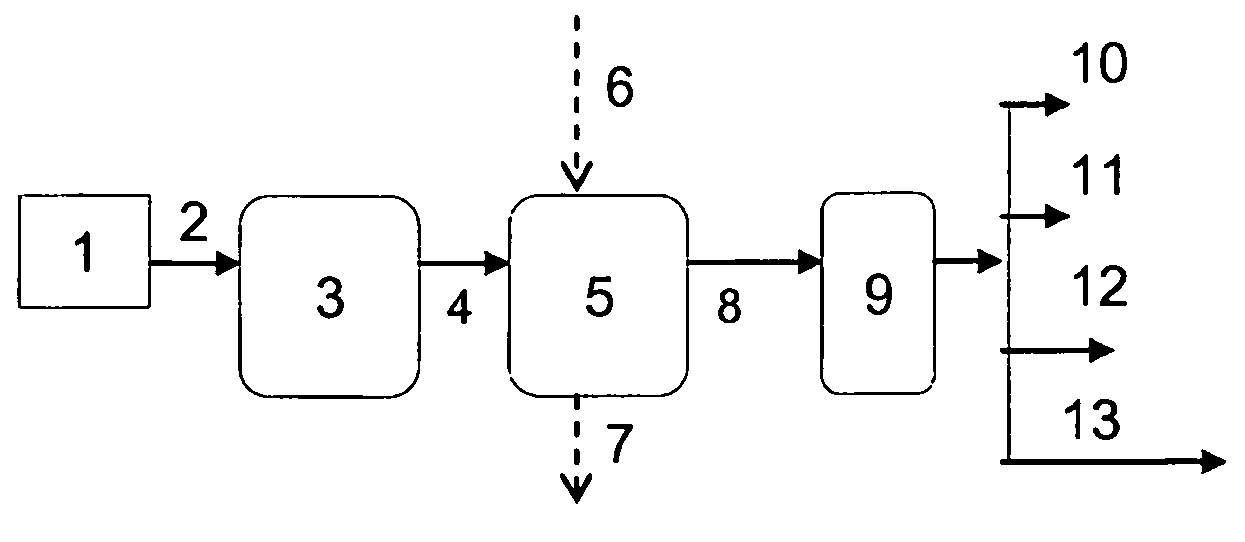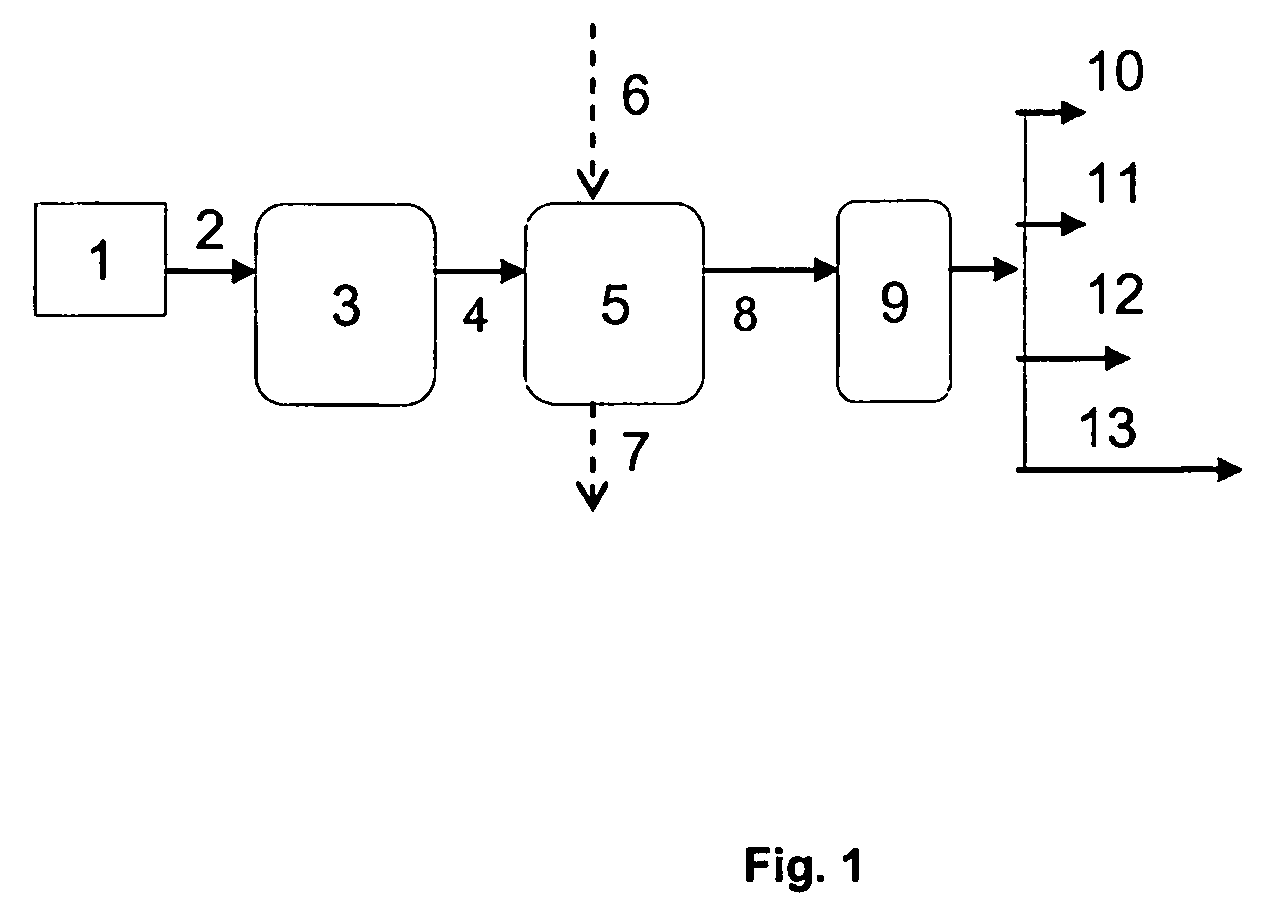Process for producing branched hydrocarbons
- Summary
- Abstract
- Description
- Claims
- Application Information
AI Technical Summary
Benefits of technology
Problems solved by technology
Method used
Image
Examples
example 1
Preparation of Fuel Components from Fatty Acids Derived from Palm Oil
[0110]Palm oil was hydrolyzed. Double bonds of the fatty acids derived from palm oil feedstock were selectively prehydrogenated, and the saturated fatty acids were continuously ketonised at atmospheric pressure, in a tubular reactor using a MnO2 catalyst. Temperature of the reactor was 370° C., the weight hourly space velocity (WHSV) of total feed being about 0.8 l / h. A mixture of saturated ketones having carbon chain lengths of C31, C33 and C35 was obtained as the product.
[0111]The above obtained feed comprising ketones was then subjected to combined hydrodefunctionalization and isomerization. Feed compound C35 ketone contains about 3.16 wt. % oxygen, compound C33 ketone 3.34 wt. % oxygen and compound C31 ketone 3.55 wt. % oxygen. Thus palm ketone contains about 3.4 wt. % oxygen. The catalyst employed in the combined step was Pt / SAPO-11 on alumina binder. The process was carried out at a temperature of 365° C. and...
example 2
Preparation of Fuel Components from C16 Alcohol Derived from Palm Oil
[0113]200 g of primary saturated C16 fatty alcohol (hexadecanol), palladium chloride (5 ppm palladium) and 12 g of sodium methoxylate were put in a Parr reactor. Mixing was adjusted to 250 rpm, temperature to 250° C. and pressure to 0.5 MPa. Slight nitrogen purge was maintained to sweep out water liberated in reaction. The condensation reaction was carried out until the amount of condensed alcohol was stabilized in GC analysis. After reaction the product was neutralized with hydrochloric acid, washed with water and dried with calcium chloride. Condensed C32 alcohol was obtained as reaction product.
[0114]The above obtained feed comprising branched C32 alcohol, 2-tetradecyl-oktadecanol was subjected to combined hydrodefunctionalization and isomerization. Feed C32 alcohol contains about 3.43 wt. % oxygen. The catalyst employed in the CHI was Pt / ZSM-23 on alumina binder. The process was carried at a temperature of 366°...
example 3
Preparation of Fuel Components from Unsaturated Fatty Acids Derived from Palm Oil
[0116]The free fatty acids were distilled from palm oil (PFAD). The feed containing both saturated and unsaturated fatty acids was continuously ketonised at atmospheric pressure, in a tubular reactor using a MnO2 catalyst. Temperature of the reactor was 370° C., the weight hourly space velocity (WHSV) of total feed being about 0.6 l / h. A mixture of both saturated and unsaturated ketones having carbon chain lengths of C31, C33 and C35 was obtained as the product.
[0117]The above obtained feed comprising ketones was subjected to combined hydrodefunctionalization and isomerization. Feed compound C35 ketone contains about 3.16 wt. % oxygen, compound C33 ketone 3.34 wt. % oxygen and compound C31 ketone 3.55 wt. % oxygen. Thus unsaturated palm ketone contains about 3.4 wt. % oxygen. The process was carried out in the presence of Pt / SAPO-11 catalyst on alumina binder at a temperature of 356° C. and under a pres...
PUM
| Property | Measurement | Unit |
|---|---|---|
| Temperature | aaaaa | aaaaa |
| Temperature | aaaaa | aaaaa |
| Temperature | aaaaa | aaaaa |
Abstract
Description
Claims
Application Information
 Login to View More
Login to View More - R&D
- Intellectual Property
- Life Sciences
- Materials
- Tech Scout
- Unparalleled Data Quality
- Higher Quality Content
- 60% Fewer Hallucinations
Browse by: Latest US Patents, China's latest patents, Technical Efficacy Thesaurus, Application Domain, Technology Topic, Popular Technical Reports.
© 2025 PatSnap. All rights reserved.Legal|Privacy policy|Modern Slavery Act Transparency Statement|Sitemap|About US| Contact US: help@patsnap.com


